Keto sweeteners are an essential ingredient in many low-carb keto recipes. This guide will take you through the pros and cons of each sweetener and help you figure out the perfect keto sweetener for any recipe - be it coffee, cake, cookies, frostings, or more! It's the ultimate keto sweetener guide!
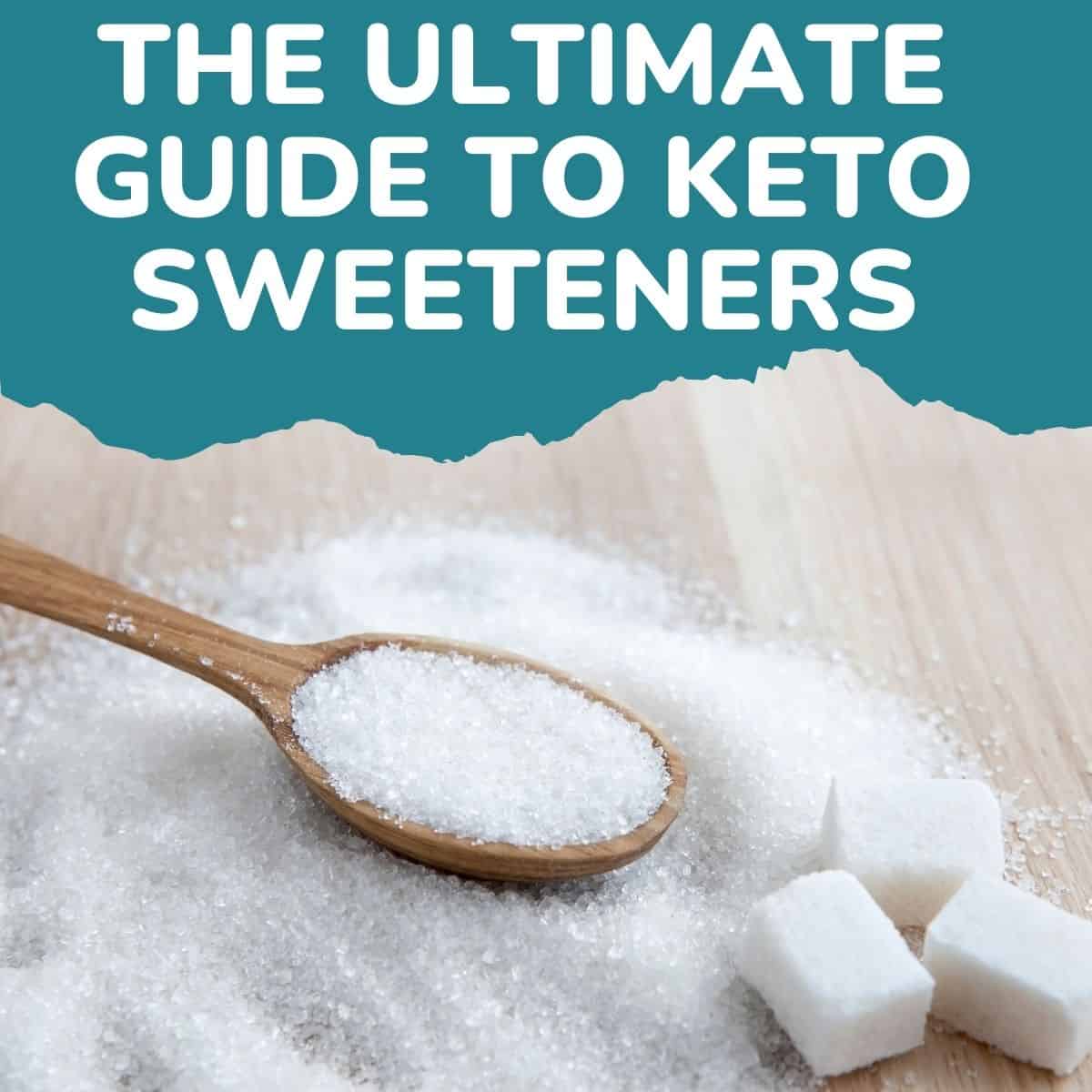
Navigating the world of keto sweeteners can be challenging. You may wonder, "which sweetener will work best for my recipe?", "is this sweetener natural?", "will this leave an aftertaste?", "how much do I use?", and more.
I'll answer all of your questions in this ultimate sugar-free keto sweetener guide.
Included in the guide are erythritol, xylitol, monk fruit sweetener, stevia, and allulose. And if you're more of a visual learner, I included a pros and cons chart of each keto sweetener!
I also have a recommend sweetener brand - Besti! If you scroll to the bottom of the post, you'll see why it's my preferred brand. In short, it's non-GMO, high quality, and has a unique monk fruit allulose sweetener blend which I love!
And as a gift to all my readers, I've signed up to partner with them! What does that mean for you? All my readers get 10% off - YAY!
Simply use the code "CRAVEABLE" at checkout 🙂
Before we dive into low-carb keto sweeteners, though, be sure to check out my article The Keto Diet: Everything You Need To Know!
OK, let's get started!
Erythritol
Erythritol is part of a family of sugar alcohols found in nature but has a glycemic index of 0 and is easy to digest. It also has 0 calories and 0 net carbs.
Contrary to what some people may believe, sugar alcohols are not artificial sweeteners. There is some processing involved, but this is no less natural than the processing needed for coconut sugar, maple syrup, or white table sugar. You can also choose to buy ones that are guaranteed non-GMO and/or organic.
Erythritol is naturally occurring in many fruits. It's made by a simple process of fermentation.
Erythritol sweetener comes from fermenting corn or birch. Just to be clear, it is not corn or birch itself, it’s the byproduct of the fermentation process. Therefore, erythritol is keto, low carb and has zero net carbs.
If you prefer to avoid corn, erythritol made with birch is a good option but is more expensive. I buy erythritol made by fermenting non-GMO corn, knowing that the part I am consuming does not actually have any corn in it.
How to use erythritol
Erythritol is 70% as sweet as sugar, so you'll need to use 1 ⅓ cups of erythritol to replace 1 cup of sugar. Note that the popular brand Swerve has added prebiotic plant fiber which raises the sweetness to be the same as sugar.
How does erythritol taste
Erythritol tastes like real sugar! It can, however, have a slight cooling-like aftertaste similar to mint. While not usually noticeable, I've noticed the aftertaste is sometimes more present in cookies, glazes, or making something extremely sweet.
How does erythritol bake
It bakes just like sugar and can produce both crispy and soft baked goods!
Erythritol doesn't dissolve quite well as sugar. If you need the sugar to completely dissolve, I recommend using powdered erythritol.
Erythritol can crystallize when using in sauces, frostings, etc. Using powdered erythritol can help reduce crystallization.
What is erythritol best in
Erythritol is best in muffins, cakes, pancakes, cookies, or anything that needs to crisp up when baked.
<<SHOP ERYTHRITOL SWEETENERS>>
Use the code "CRAVEABLE" at checkout for 10% off!
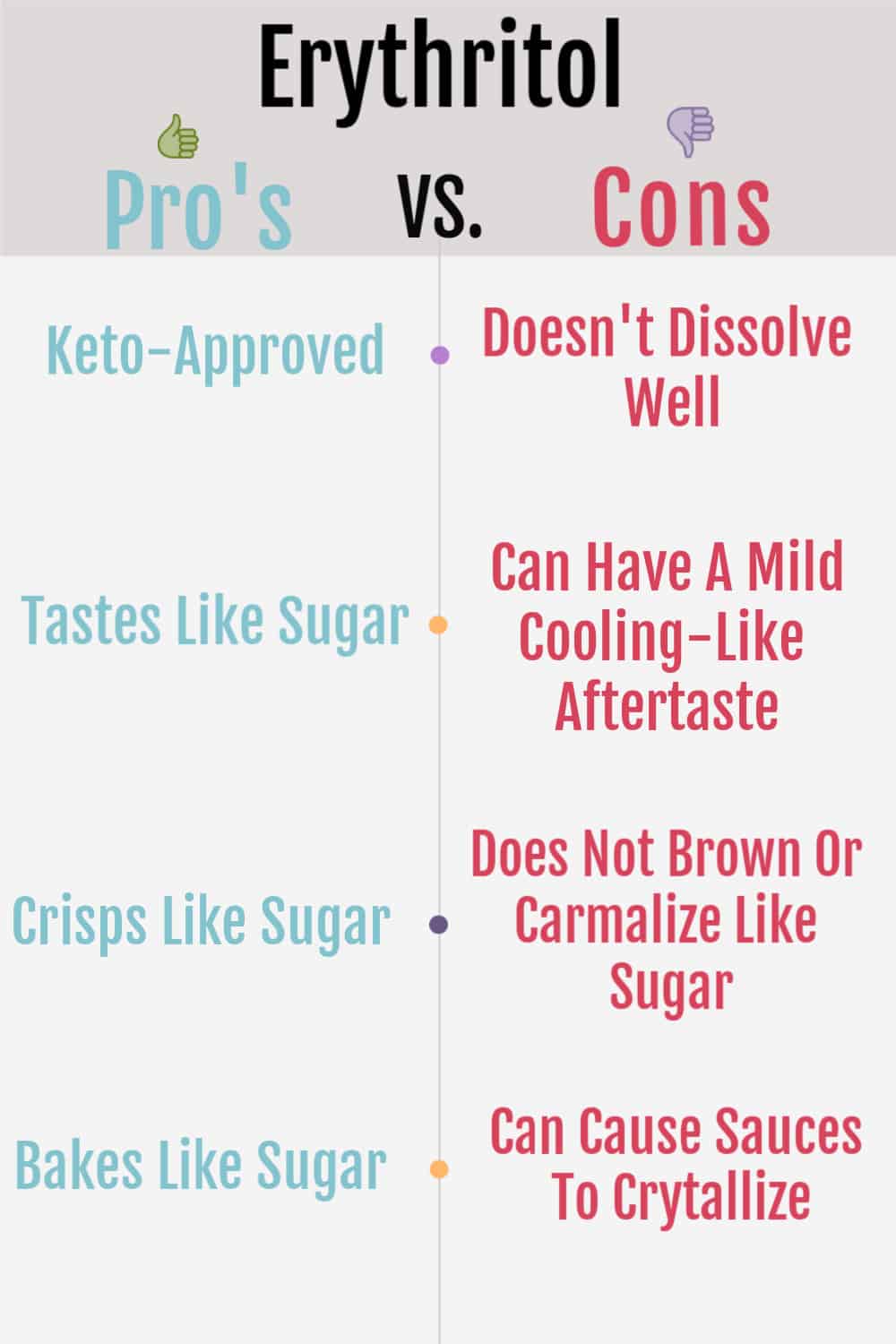
Xylitol
Xylitol is another sugar alcohol. It's made by fermenting corn or birch just like erythritol. Xylitol can cause a small amount of stomach upset, depending on the person. However, it's usually fine in moderation and doesn't cause near as much stomach upset as other sugar alcohols like maltitol or sorbitol.
It is also toxic to animals, so be careful if you have a pup!
Xylitol has 0 net carbs and is (mostly) not absorbed, making it keto-friendly. In some people, a very small amount may get absorbed causing a blood glucose and insulin response, however, it is still less than sugar.
How to use xylitol
Xylitol is just as sweet as sugar and can be used as a 1:1 replacement.
How does xylitol taste
Xylitol tastes just like sugar and has no aftertaste!
How does xylitol bake
Xylitol creates moist, soft-baked goods that don't need a crunch. I've also noticed that xylitol can cause baked goods, such as soft-baked cookies, to spread a bit more.
Xylitol can also cause the recipe to turn out overly soft, so you may need to add a bit more xanthan gum or flour.
What is xylitol best in
Xylitol is best in soft baked goods such as muffins, soft-baked cookies, ice cream, savory cooking, and cakes. It also dissolves well so it is good in coffees and teas... and did I say ice cream yet??? Cause it's really good in ice cream 🙂
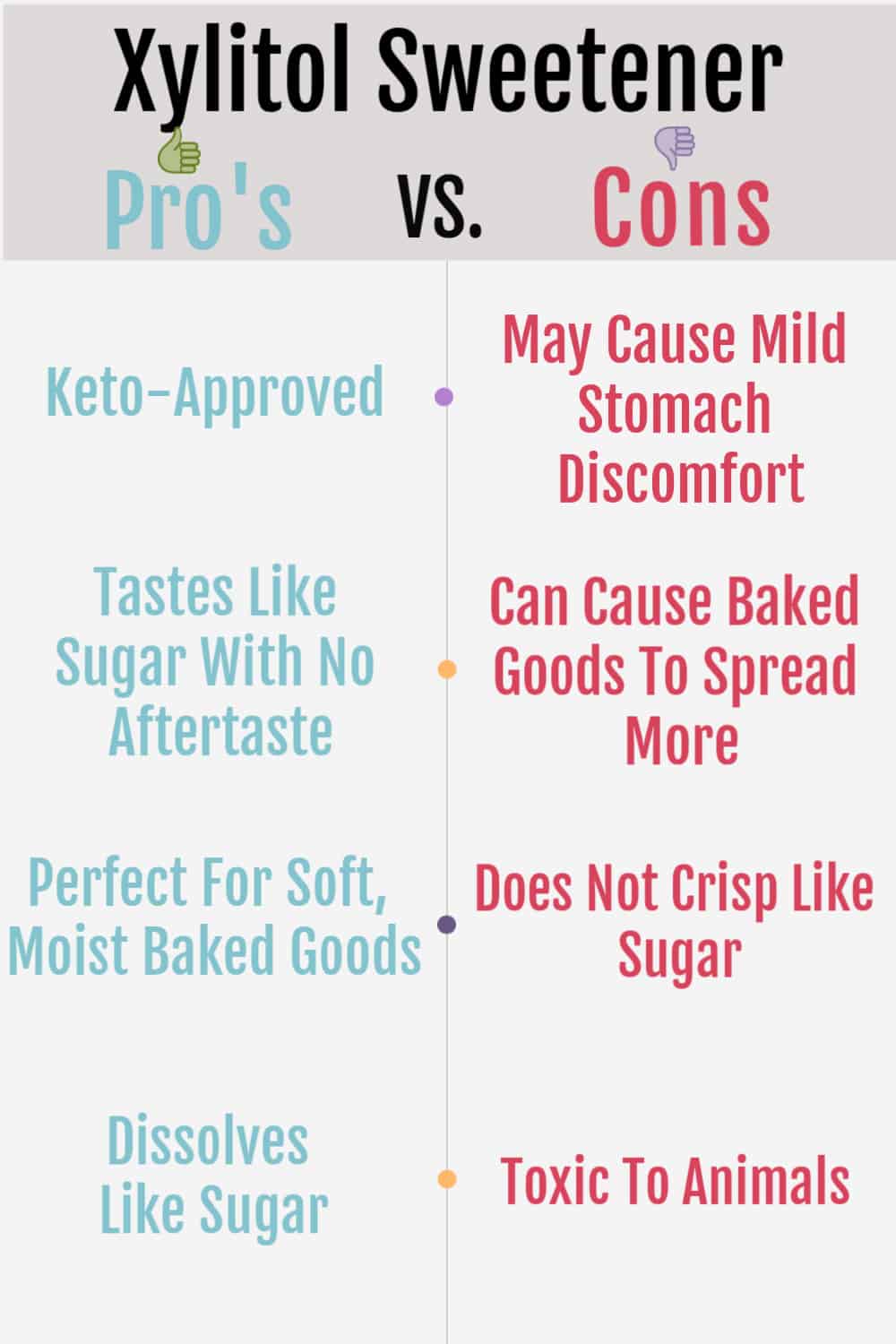
Monk fruit sweetener
As the name implies, monk fruit is derived from the monk fruit found in Asia.
It's derived by crushing the fruit, then drying the juice into a concentrated powder. It has no calories, carbs, or sugar.
Monk fruit extract is extremely sweet, and very concentrated (between 150 and 400 times as sweet as sugar!), so it's usually combined with allulose or erythritol to make a 1:1 sugar replacement.
How to use monk fruit sweetener
Monk fruit is very concentrated, but when combined with allulose or erythritol, it can usually be used as a 1:1 substitute for sugar.
How does monk fruit taste
Monk fruit is extremely sweet with no aftertaste. When combined with erythritol, however, it may have a slight cooling aftertaste.
How does monk fruit bake
When combined with erythritol, it bakes just like sugar and can be used to make soft or crispy baked goods. However, it doesn't dissolve as well as sugar. If you need the sugar to completely dissolve, I recommend the powdered variety.
When combined with allulose, it bakes like sugar but may not crisp up the way sugar does. It can also cause the recipe to turn out overly soft, so you may need to add a bit more xanthan gum or flour.
If blended with the erythritol, though, it will dissolve well not need extra xanthan gum or flour.
What is monk fruit best in
Monk fruit with erythritol is best in crispy or soft baked goods, such as muffins, cookies, or cakes.
Monk fruit with allulose is best in soft and moist baked goods, such as cakes or soft cookies. It also works well in coffee, teas, or other uses where you would need it to dissolve.
Powdered Monk Fruit With Allulose is really great for frostings! Powdered Monk fruit With Erythritol is great in frostings too, but can still have a very slight aftertaste.
<<SHOP MONK FRUIT SWEETENERS>>
Use the code "CRAVEABLE" at checkout for 10% off!
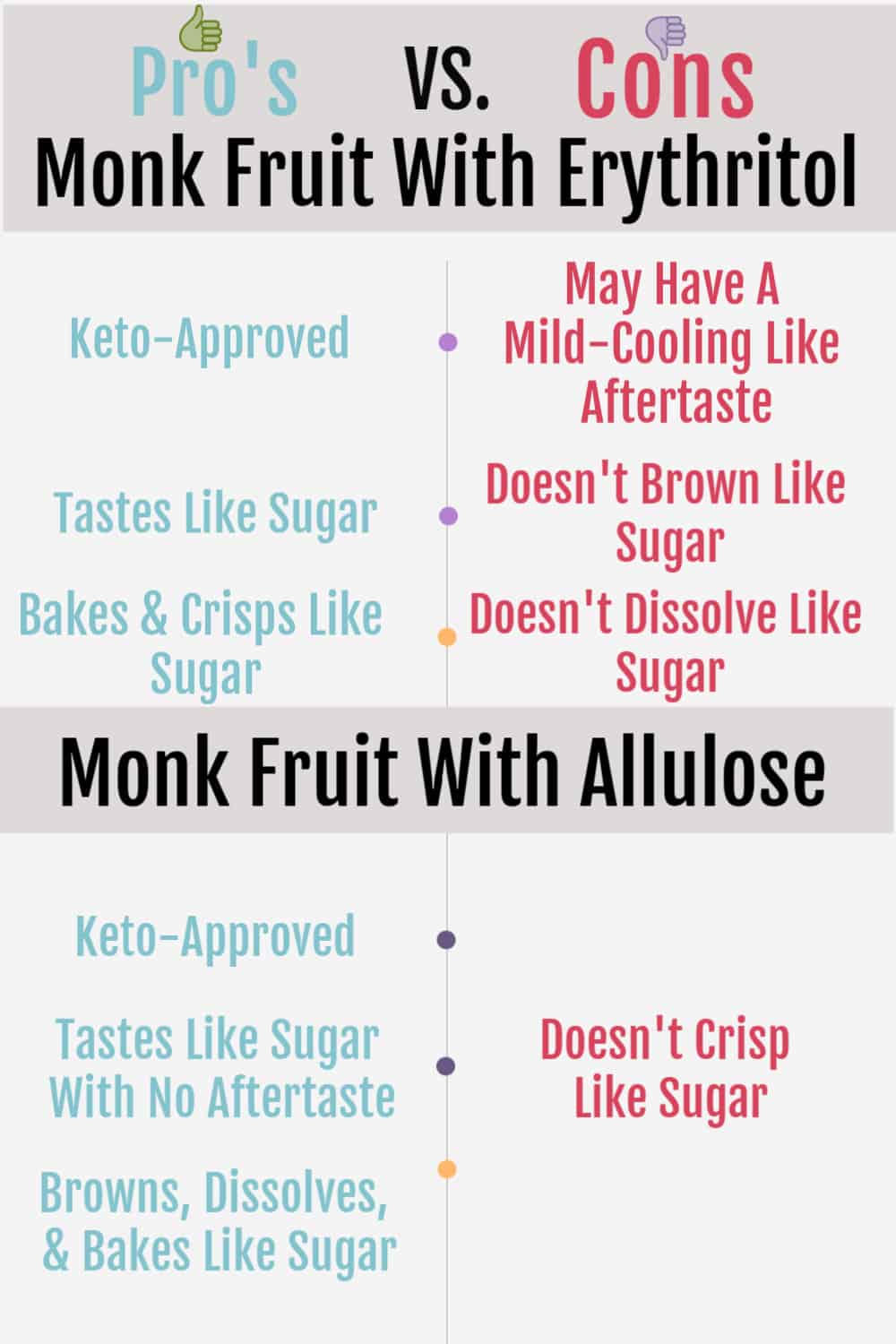
Stevia
Stevia is made from the stevia plant. It's available in liquid a granulated form. It has 0 net carbs and is perfect for keto.
Stevia has been found to have numerous health benefits. These include properties that are anti-microbial, anti-fungal, anti-tumor, anti-oxidant, and anti-diabetic.
How to use stevia
Stevia is extremely sweet so should only be used sparingly.
How does stevia taste
Stevia can sometimes have a bitter aftertaste, depending on the brand you buy.
How does stevia bake
While you can add stevia to baked goods, it's usually best used sparingly and in addition to another sweetener.
If you find a stevia baking mix, it's usually mixed with a bulking agent such as maltodextrin or dextrose, which can raise blood sugar. Look for one that's blended with xylitol or erythritol to prevent a spike in blood sugar.
What is stevia best in
Stevia is best in coffee, tea, smoothies, and the like. The taste and potency of stevia vary greatly from brand to brand, so you'll need to experiment to find a brand you prefer.
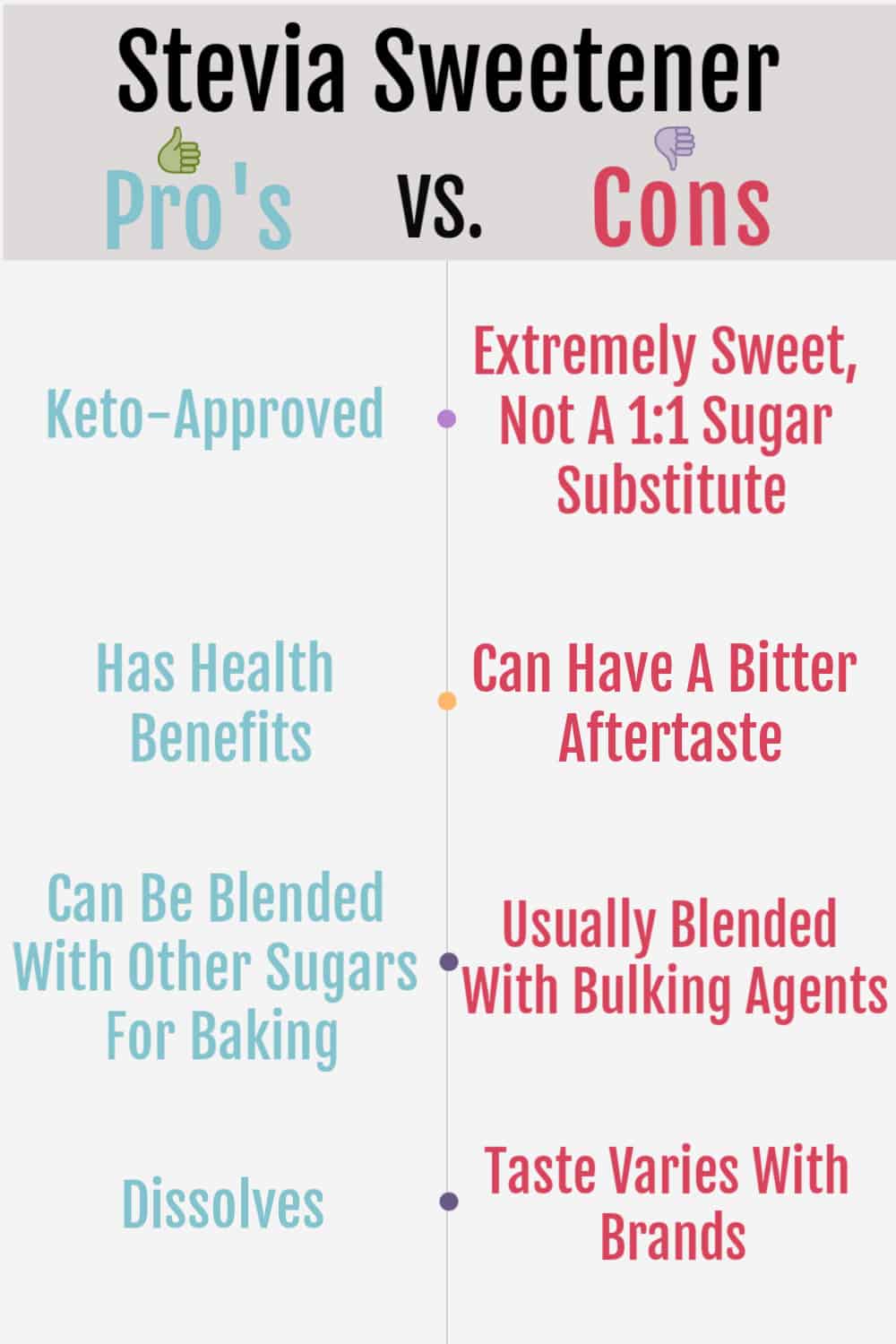
Allulose
Allulose is a natural sugar that can't be metabolized, making it taste and act like sugar without spiking our blood sugar. It a 0 glycemic index and 0 net carbs. Allulose is found in fruit, maple syrup, and other plants.
Allulose is a new keto sweetener but quickly gaining popularity! Similar to erythritol, it's made using a natural fermentation process. Since it's fermented from a plant, it's not considered an artificial sweetener.
How to use allulose
Allulose is 70% as sweet as sugar. So when using allulose, you will need 1 ⅓ cups of allulose per 1 cup of sugar. However, many people use it as a 1:1 substitute without noticing a difference.
How does allulose taste
Allulose tastes like sugar with no bitterness or aftertaste!
How does allulose bake
Allulose browns, caramelizes, dissolves, and doesn't crystallize. Unlike erythritol, it creates moister, soft-baked goods that don't need any crunch.
It can also cause the recipe to turn out overly soft, so you may need to add a bit more xanthan gum or flour.
What is allulose best in
Allulose is best in soft baked goods such as pancakes, muffins, soft-baked cookies, and cakes.
Powdered allulose is great in frostings, however, it isn't quite as sweet so you may need to use a bit more.
Use the code "CRAVEABLE" at checkout for 10% off!
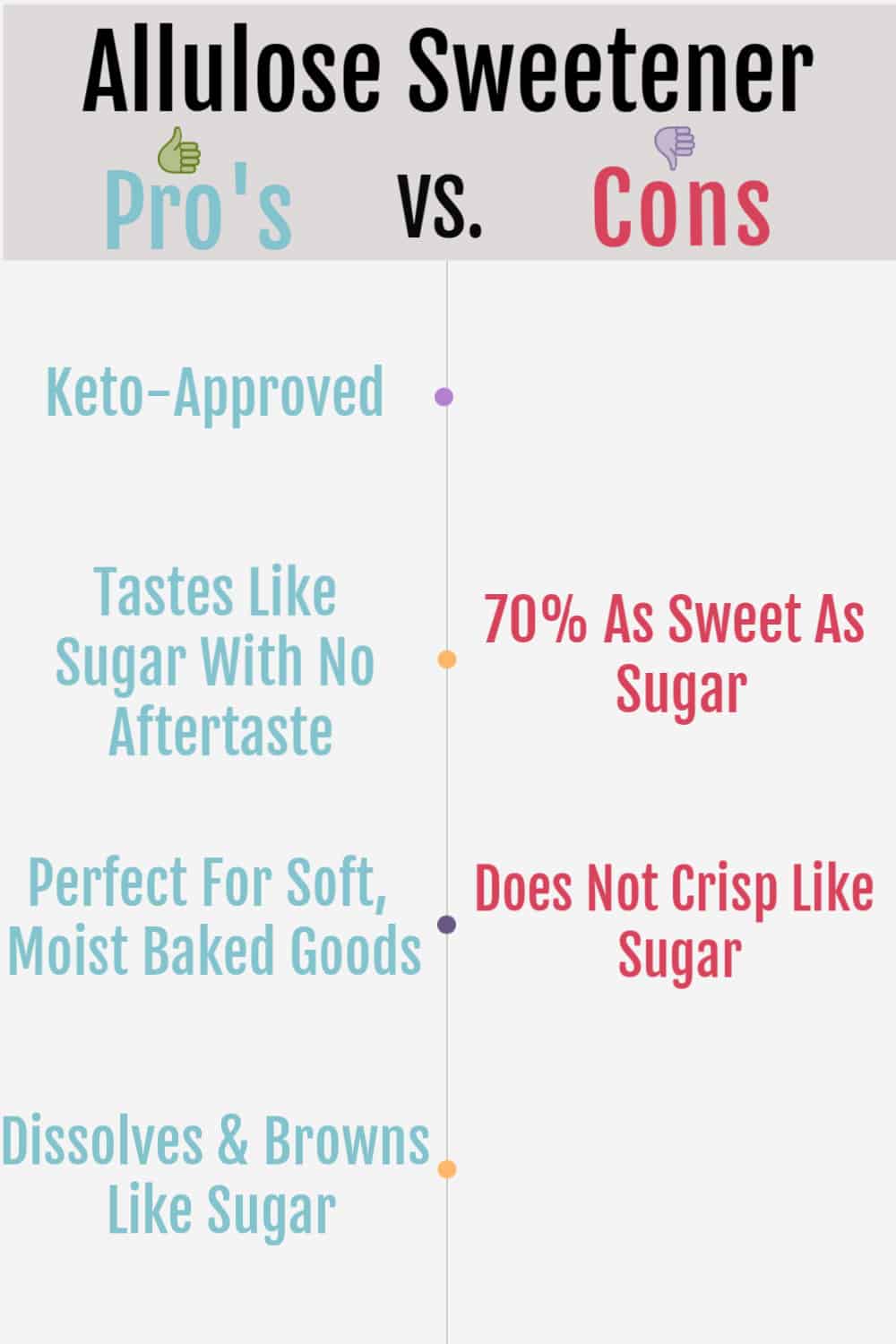
Other sugar alcohols
There are many other sugar alcohols, such as maltitol, sorbitol, and isomalt. These are the most common ones used in commercially packaged “low carb” products.
These sugar alcohols can cause a substantial amount of stomach upset and affect your blood sugar. Because of this, I don't recommend them.
Artificial sweeteners
The information about artificial sweeteners came from my Keto & Intermittent Fasting Coaching Course from Dr.Berg. This is for informational purposes only.
Let's address artificial sweeteners. Artificial sweeteners include:
- Aspartame (Equal, NutraSweet, etc...)
- Sucralose (Splenda)
- Saccharin (Sweet'N Low)
- Maltitol
- Dextrose
- Maltodextrin
- Splenda (has dextrin, maltodextrin, and sucralose)
Without going into detail, I don't recommend artificial sweeteners because there are some studies that link them to numerous health issues, but more importantly, on the keto diet, they can increase hunger and spike blood sugar - despite being 0 carbs! So I do not recommend them.

Choosing a keto sweetener brand
I personally love the Besti brand of Keto Sweeteners. All the sweeteners are:
✅ Non-GMO
✅ Zero Calories
✅ Zero Net Carbs
✅ Zero Glycemic Index
✅ Tooth-Friendly
✅ Keto-Friendly
✅ Diabetic-Friendly
✅ Paleo-Friendly
✅ Vegan
✅ And Delicious!
Here are some more reasons I love Besti:
- Besti has a unique Monk Fruit Allulose Blend – Their monk fruit sweetener with allulose is the first and only one of its kind. It replaces sugar cup-for-cup and tastes just like sugar, but even more amazing, it even bakes, dissolves, caramelizes, and browns like sugar.
- They use the highest grade of Monk Fruit Extract – Their monk fruit extract is the highest grade out there. This makes theirs slightly sweeter and more importantly, gives it a superior taste without any aftertaste.
- Their Erythritol is non-GMO – Many brands containing erythritol don’t specify whether it comes from non-GMO sources. All their products are guaranteed non-GMO.
- Allulose acts like sugar because it’s in the sugar family – Most keto sugar replacements contain sugar alcohols or other fillers that vary in taste (they have erythritol in some of theirs too!), but they don’t dissolve, brown or caramelize as sugar does. Their allulose acts just like sugar when you cook or bake with it but still has 0 carbs.
- Zero calories, zero net carbs, zero glycemic indexes, and zero aftertaste.
- They're available in granulated, powdered, and crystallized forms.
Use the code "CRAVEABLE" at checkout for 10% off!


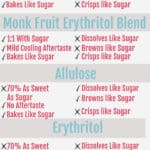
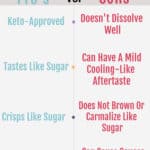
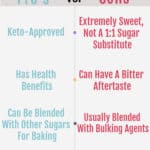
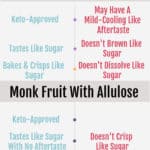
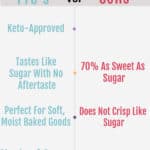
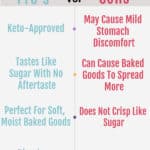
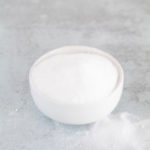


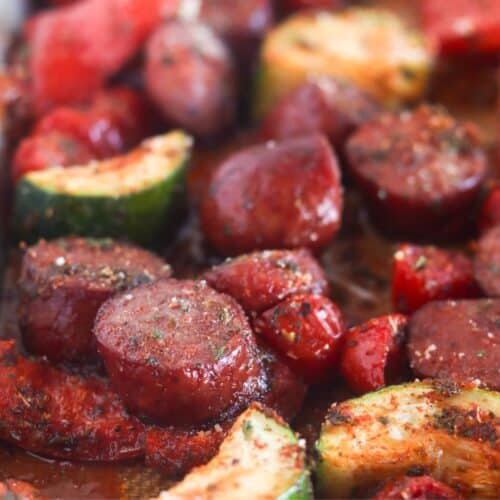
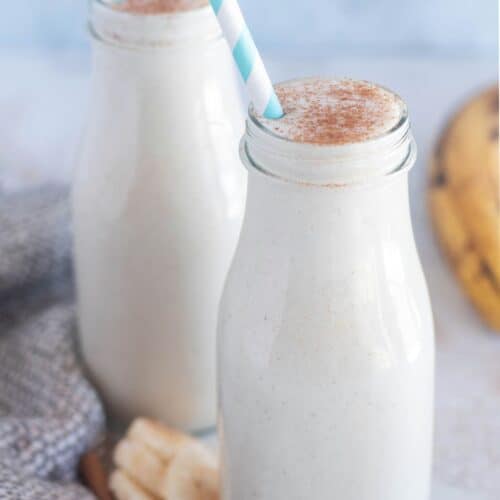
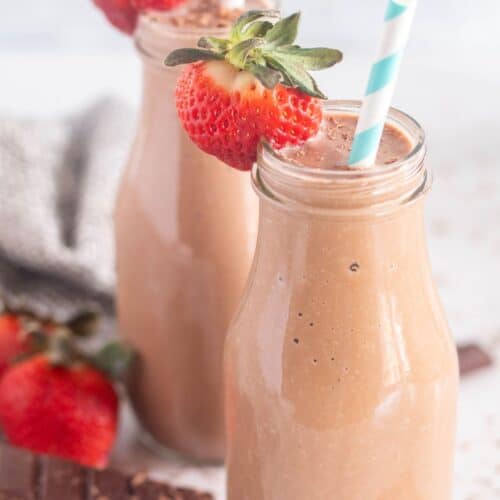
Joan says
Hey Cassidy! I just found your Site and I'm excited to delve into your recipes and advice! I have a question that hasn't been answered anywhere - you've come the closest, but not exactly. I have some concentrated powdered monk fruit and some plain allulose and want to combine them together to make my own baking blend, so I need to know what the ideal ratio should be of monk fruit powder to allulose. I should mention that the allulose I have is almost a powder, very finely ground, so would it be possible to just blend the two together without having to grind the allulose even finer?
Thanks!!
Cassidy says
Hi Joan, what a great question!
Without experimenting and doing some math that's a bit over my head, I just can't say for sure - sorry! I do know that allulose is only 70% as sweet as regular sugar (so for every 1 cup of sugar you'll need 1 1/3 cups of allulose) and monk fruit is around 200 times sweeter than regular sugar. It hurts my brain to try to figure out an exact ratio of the 2 to equal the same sweetness as sugar 🤣 Maybe you could figure it out, I just can't seem to wrap my head around it!
Second, since your allulose is very finely ground, I'd imagine you don't need to grind it.
I hope I helped at least a little bit, sorry I couldn't give you exact measurements!
XO,
Cassidy
S Ray says
How much stevia added to allulose to make it a 1:1?
Cassidy Stauffer says
Hi S Ray,
It's hard to say because the granulated varieties usually have fillers and different brands of stevia (liquid and granulated) have different strengths, so it depends on what kind you use. Allulose is 70% as sweet as other sweeteners so for every 1 cup, you'll need to use 1 1/3 cup, which isn't a lot extra so a small amount of stevia would probably do it. If you're using the liquid variety, I'd say a few drops up to 1/4 tsp. per cup maybe depending on the brand??? Sorry I couldn't be more specific but I hope it helps at least a little bit!
XO,
Cassidy
Laurel says
I have a pure monk fruit powder with no other sugar substitutes in it, just monk fruit. I bought it because I don’t want to eat any of those fake sugars. But I’m totally lost on how to bake with it since it isn’t granulated, and it’s very sweet in small amounts. Is this just a “throw monk powder at the batter and see what sticks” situation?
Cassidy Stauffer says
Hi Laurel!
Pure monk fruit powder is very hard to bake with simply because, as you said, it's not granulated and it's so sweet. You almost need a recipe that was written specifically for monk fruit powder or you can experiment. However, granulated sweeteners usually do more than just sweeten when baking so it may throw off the texture. It would work great for things like fat bombs, smoothies, puddings, or anything else that's not baked though!
Sorry I couldn't be of more help, but I've never perfected baking with pure monk fruit. I usually use a monk fruit/erythritol blend or a monk/fruit allulose blend.
Sorry again, I know this isn't the answer you were hoping for!
XO
-Cassidy
Katrina says
I have powdered monk fruit (Lakanto) and granular allulose. I’d like to combine them to make my own blend to substitute 1:1 for sugar. Any recommendation for ratio if allulose to monk fruit?
Cassidy Stauffer says
Hi Katrina!
The Lakanto brand of monk fruit is mixed with erythritol and is already formulated to be used as a 1:1 substitute. Allulose is 70% as sweet as sugar, so for every 1 cup of sugar, you'll need 1 1/3 cups of allulose. Maybe you could mix 1 cup of Lakanto per 1 1/3 cup of allulose??? However, you mentioned that the lakanto was powdered and the allulose is granulated. If you mix them, I would recommend powdering the allulose first so they will both be powdered. I don't recommend mixing powdered with granulated. I hope this helps!!!
-cassidy